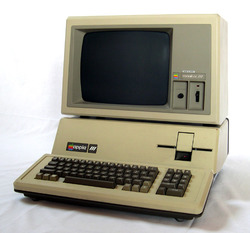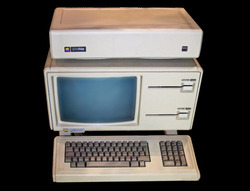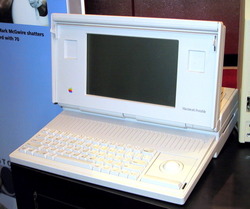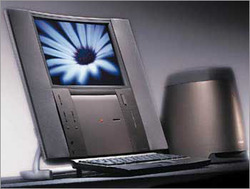If you’ve ever taken a simple business course, you know that companies put a lot of time, research and money into figuring out what their customers want. But if you’ve ever bought an Apple product—you know that that’s not the way Apple, Inc. runs things. Nope, over in Cupertino, Calif. they design and engineer products first, and then respond by telling people what they want. And for the most part, the people listen, buying up millions of whatever “iProduct” Steve Jobs or his successor, Tim Cook, have pitched to them. But it’s not always been that way. In fact, a series of failed products in the ’80s and ’90s left Apple in a very undesirable position until Jobs took back the reigns in 1997.
Here’s a look at the five products that almost gave Apple a rotten name:
1. The Apple III (1980)
After the success of 1977’s Apple II, the company’s first profitable, mass-produced microcomputer, Apple decided to do one of the things it does best: come out with a slightly-more-advanced yet significantly-more-pricey version of the same product. Customers weren’t willing to make the price jump. Apple discontinued production in 1984 and continued releasing upgraded versions of the Apple II into the early 90s.
2. The Apple Lisa (1983)
Following the failure of the Apple III, the company released this revolutionary entry into the Graphical User Interface (GUI) market for a whopping $9,995 (over $22,000 today). Steve Jobs had been kicked out of the development process a year before its release and was instead lending his hand to the Macintosh Project, released shortly afterwards. Customers followed Jobs’ lead and went with the faster Mac, which also came with a significantly cheaper price tag. The Lisa was discontinued in 1986, and in 1989, Apple buried 2,700 unsold Lisas in a guarded landfill in Utah for a tax write-off.
3. The Macintosh Portable (1989)
Sure, the idea for a portable computer back in the late ’80s seems like it should have been a profitable excursion for Apple, but the 16 lb. Macintosh Portable was pushing the boundaries of “portable.” Up against significantly-lighter products by competing companies like Toshiba, it just couldn’t keep afloat.
4. The Newton MessagePad (1993)
What some would call the precursor to the iPad, it makes sense that the Newton was, simply, ahead of its time. A “personal digital assistant” complete with handwriting recognition, the Newton contained technology that Apple still uses today in Mac OS X and inspired the highly successful Palm Pilot released in 1996, but customers just weren’t sure what to do with it at the time.
5. The 20th Anniversary Macintosh (1997)
This limited-edition computer, made to celebrate the 20th anniversary of the company, didn’t add many new system upgrades from the regular Mac available at the time, but Apple execs hoped that it’s fancy packaging and Bose speakers would be enough to get customers to spend the $7,500 it cost. It wasn’t. By the time it was taken off the shelves a year later, the price tag had dropped below $2,000.




